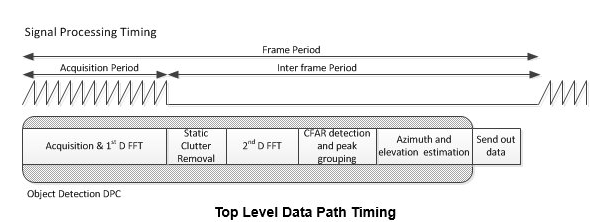Other Parts Discussed in Thread: STRIKE
Hello there,
Might be silly - I wanted some clarifications on subframes and frames. In my understanding, a frame may consist of multiple types of chirps (subframes), as in the TI Automotive Toolbox's Medium Range Radar example. However, in the demo example provided with SDK (xwr18xx), the documentation mentions four subframes, while the frame consists of a single type of chirp. So what does subframes 0 to 3 refer to here? Also, any particular reason for 4 four subframes?
Also, if it does refer to multiple types of chirps in a frame, do they occur in the format (in a single frame): subframe 0 acquisition period -> subframe 0 processing period -> subframe 1 acquisition period -> ... -> subframe 3 processing period?
Thanks.





